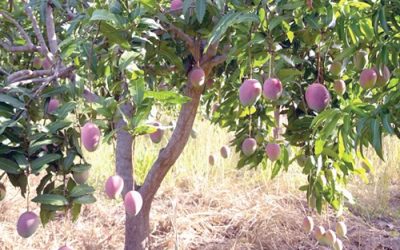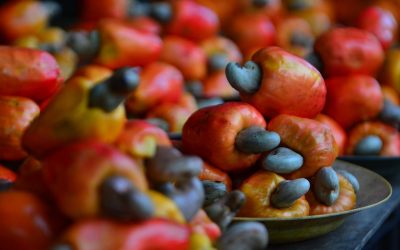Introduction to the Cashew Industry: A Brief Overview
The cashew industry has a rich history that dates back centuries. Cashews are native to northeastern Brazil and were introduced to other parts of the world by Portuguese explorers in the 16th century. Today, cashews are grown in many tropical regions around the world, including India, Vietnam, Nigeria, and Ivory Coast.
Cashews are an important commodity in global trade. They are one of the most consumed nuts in the world and are used in a variety of culinary applications, from snacks to desserts. In addition to their culinary uses, cashews are also used in the production of cashew butter, cashew milk, and cashew oil. The global cashew market is valued at billions of dollars and continues to grow each year.
The Importance of Sorting and Grading Cashews
Sorting and grading cashews is a crucial step in the production process. It ensures that only high-quality cashews reach the market, while lower-quality cashews are discarded or used for other purposes.
Sorting and grading benefits both consumers and producers. For consumers, it ensures that they are purchasing cashews that meet their expectations in terms of taste, texture, and appearance. For producers, it allows them to command higher prices for their high-quality cashews, while also reducing waste and maximizing profits.
The Anatomy of a Cashew: Understanding the Different Parts
To understand the importance of sorting and grading cashews, it is important to understand the different parts of a cashew and how each part affects the quality of the nut.
A cashew consists of three main parts: the shell, the kernel, and the cashew apple. The shell is the hard outer covering of the cashew and is removed before the nut is consumed. The kernel is the edible part of the cashew and is what most people think of when they think of cashews. The cashew apple is the fleshy part that surrounds the cashew kernel, but it is not commonly consumed.
The quality of a cashew is determined by the size, color, and shape of the kernel. Larger cashews are generally considered to be of higher quality, as they have a higher percentage of whole kernels and are easier to process. The color of the kernel can vary from white to light yellow, and a uniform color is preferred. The shape of the kernel should be uniform and free from any deformities.
The Sorting Process: From Harvest to Packaging
The sorting process for cashews begins as soon as they are harvested. After the cashews are harvested, they are dried to remove excess moisture. Once dried, the cashews are sorted based on their size, color, and shape. This is typically done by hand, although some larger producers may use machines for this process.
During the sorting process, any cashews that do not meet the desired criteria are removed and set aside for further processing or discarded. The remaining cashews are then packaged and prepared for distribution.
Quality control is an important aspect of the sorting process. This involves inspecting the cashews for any defects or impurities and ensuring that they meet the desired standards. This can be done through visual inspection or through the use of technology, such as X-ray machines or metal detectors.
The Grading System: How Cashews are Classified by Quality
Cashews are classified into different grades based on their quality. The grading system takes into account factors such as size, color, and shape, as well as any defects or impurities.
The grading system for cashews varies depending on the country and the specific requirements of the market. In general, cashews are graded into four main categories: W180, W210, W240, and W320. The “W” stands for “whole,” and the number refers to the number of cashews per pound.
The higher the number, the smaller the cashews. For example, W180 cashews are larger and more expensive than W320 cashews. The grading system also takes into account the color and shape of the cashews, with uniformity being a key factor in determining the grade.
Factors Affecting Cashew Quality: Size, Color, and Shape
Size, color, and shape are important factors that affect the quality of cashews. Larger cashews are generally considered to be of higher quality, as they have a higher percentage of whole kernels and are easier to process. Smaller cashews may have a higher percentage of broken or split kernels.
The color of the cashew kernel can vary from white to light yellow. A uniform color is preferred, as it indicates that the cashews have been properly processed and dried. Cashews that are discolored or have dark spots may indicate that they are not fresh or have been improperly stored.
The shape of the cashew kernel should be uniform and free from any deformities. Cashews that are misshapen or have irregularities may indicate that they are of lower quality or have been damaged during processing.
The Role of Technology in Cashew Sorting and Grading
Technology plays a crucial role in the cashew sorting and grading process. Advances in technology have made it possible to sort and grade cashews more efficiently and accurately, resulting in higher-quality products and increased productivity.
One of the main technologies used in cashew sorting and grading is X-ray machines. These machines can detect any defects or impurities in the cashews, such as broken kernels, shell fragments, or foreign objects. This allows for quick and accurate sorting of the cashews, ensuring that only high-quality nuts reach the market.
Another technology used in cashew sorting and grading is computer vision. This involves the use of cameras and image processing software to analyze the size, color, and shape of the cashews. This technology can quickly and accurately sort the cashews based on their quality, resulting in a more consistent and uniform product.
The Human Element: Skilled Workers in the Cashew Industry
While technology plays a crucial role in cashew sorting and grading, the human element is equally important. Skilled workers are needed to operate the sorting and grading machines, as well as to perform quality control checks and ensure that the cashews meet the desired standards.
Training and education are important for workers in the cashew industry. They need to be familiar with the different grades and quality standards for cashews, as well as the proper techniques for sorting and grading. This can be done through on-the-job training or through formal education programs.
Workers in the cashew industry face a number of challenges. The work can be physically demanding, as it often involves long hours of standing and repetitive tasks. There is also a risk of injury from handling sharp objects or working with machinery. Additionally, workers may be exposed to dust or allergens from the cashew shells, which can cause respiratory problems.
Challenges and Opportunities in the Cashew Market
The cashew industry faces a number of challenges, but there are also opportunities for growth and development. One of the main challenges is the fluctuating price of cashews. The price of cashews is influenced by factors such as supply and demand, weather conditions, and market trends. This can make it difficult for producers to plan and budget for their operations.
Another challenge is the competition from other nut producers. Cashews face competition from other nuts such as almonds, pistachios, and walnuts, which are also popular in the global market. Producers need to find ways to differentiate their cashews and attract consumers.
Despite these challenges, there are opportunities for growth and development in the cashew industry. The demand for cashews continues to grow, driven by factors such as increasing consumer awareness of the health benefits of nuts and the growing popularity of plant-based diets. There is also an opportunity to expand into new markets, such as the growing middle class in emerging economies.
Sustainability is also an important consideration in the cashew industry. Cashew production can have a significant impact on the environment, as well as on the livelihoods of farmers and workers. It is important for the industry to adopt sustainable practices, such as responsible farming methods and fair trade practices, to ensure the long-term viability of the industry.
Conclusion: The Future of Cashew Sorting and Grading
In conclusion, sorting and grading cashews is a crucial step in the production process that ensures the quality and consistency of the final product. Technology plays a key role in this process, but the human element is equally important. Skilled workers are needed to operate the sorting and grading machines and to perform quality control checks.
The cashew industry faces a number of challenges, but there are also opportunities for growth and development. The demand for cashews continues to grow, driven by factors such as increasing consumer awareness of the health benefits of nuts and the growing popularity of plant-based diets. However, producers need to find ways to differentiate their cashews and attract consumers in a competitive market.
Investment in technology and training for workers is crucial for the future of the cashew industry. This will help to improve the efficiency and accuracy of the sorting and grading process, resulting in higher-quality products and increased productivity. It will also help to ensure the long-term sustainability of the industry, both in terms of environmental impact and the livelihoods of farmers and workers.





0 Comments